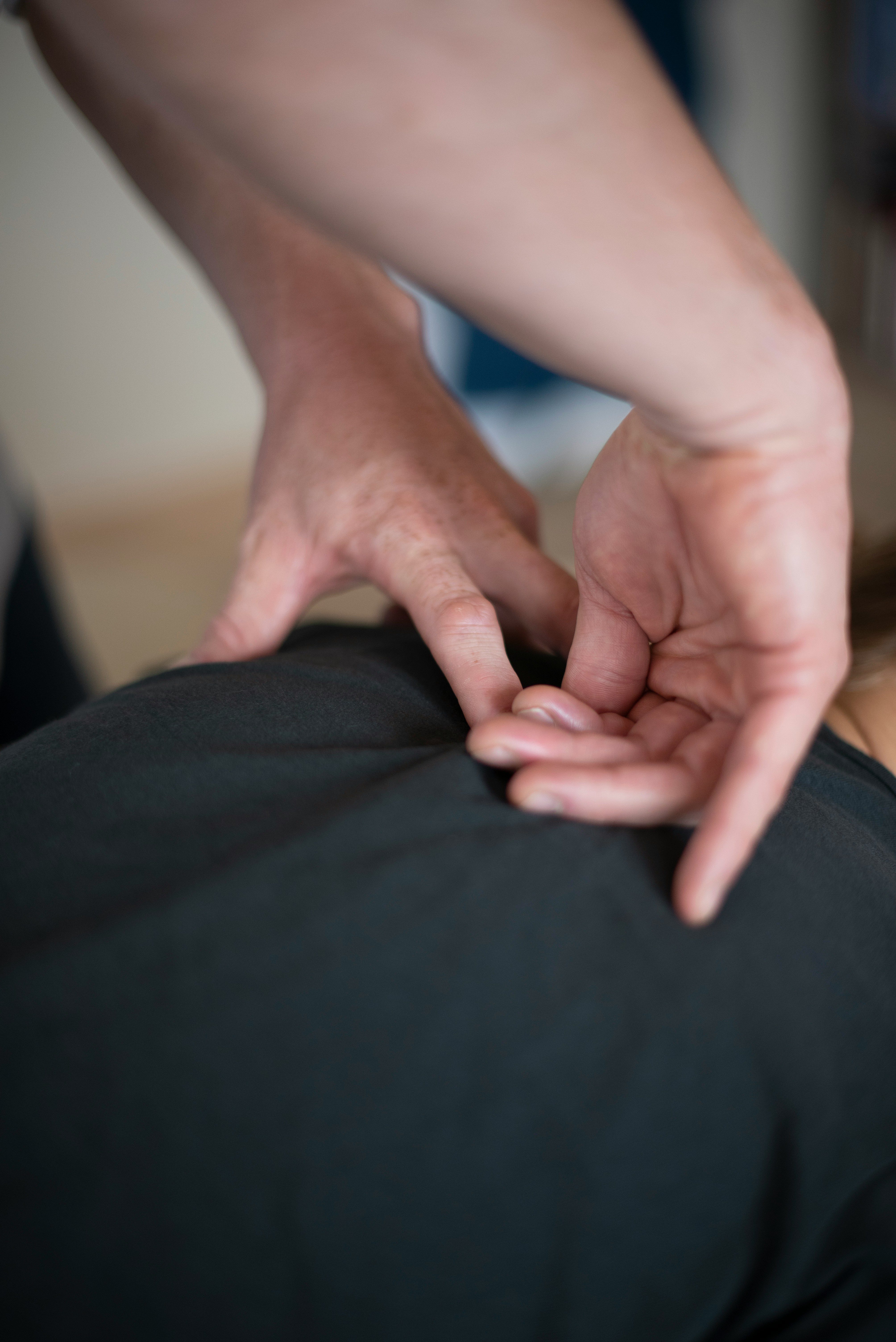
What is Osteopathy?
Osteopathy is a holistic medicine that focuses on the granular mechanics of the body. It is a gentle, non-invasive medicine, suitable for adults, the elderly, babies, toddles, children, and more.
The treatment uses the philosophy that each part of the body integrates and functions in sync with each other. It aims to treat and strengthen all the mobile structures of the body. Including structural (bones, joints, muscles), visceral (internal organs) and cranium (head scalp).
How does osteopathy work?
Unlike traditional medicine, that treats a specific area of the body. Osteopathy uses a holistic approach to treat the problem area, as well as balance all the systems of the body.
During a therapy, the doctor of osteopathy will use a range of gentle hand techniques. Such as soft tissue stretching, deep tactile pressure and manipulation of joints. Each technique aims to improve circulation and restore balance in the body systems.
If one part of the body is restricted, the rest of the body has to adapt and compensate for this loss of movement. This leads to inflammation, pain, stiffness and other health conditions. Back pain, neck pain, headaches, arthritis, sinus, pregnancy issues, just to name a few . In fact, the consequences of restriction of a part may be manifold and far-reaching.
For example, a restriction to the liver may influence the metabolism, which in turn may lead to digestive problems related to fat and sugar intolerances. Or it may influence the mechanics of the spine, which may lead to pain and reduced vitality. We have also seen the effects of a hysterectomy on other organs, and how these can result in digestive symptoms. As well as bowel issues such as Irritable Bowel Syndrome.
When the body is free of restrictions in movement, Osteopathic treatment can assist the body with pain minimisation. As well as reduced stress and greater mobility, and in doing so, provide the body with the opportunity of healing itself.
Our osteopathy Ireland patients include adults, the elderly, children, babies, pregnant women, and sports people. The treatment is gentle and suitable for anyone.
We recommend osteopathy for a wide variety of conditions. Most common are back pain, neck pain, headaches, pregnancy posture, and sports injuries. See the full list below.
We use a variety of osteopathy treatments. Such as cranial osteopath, and viceral manipulation. Once our osteopath makes and assessment of your condition, they will advice you on the best for you.
What is osteopathy recommended for?
Back pain, including disk pain, sciatica, a posture pain
Neck pain, including whiplash
Knee, ankle pain
Hip Pain
Sprains & strains
Pulled muscles
Headaches & migraines
Jaw pain & sinusitis
Arthritis & asthma
Wrist pain
Tennis elbow
Shoulder elbow
Postnasal drip
IBS
Dysphonia/ Fracture rehabilitation
Pregnancy related problems
Fertility
Workplace related conditions.
Anxiety
Helps babies sleep
What to expect in Osteopathy treatment
Osteopathy is different for each client.
The first appointment with our osteopath will be a longer than a normal appointment. This allows the osteopath to access your condition and determine the best treatment.
First appointment checklist
Ask questions about your condition, and general health.
Perform an in-depth physical examination. Osteopathy involves hands on examination and treatment by our doctor. Before treatment, we will advice you on what to wear.
You will need to stretch and move your body so our doctor can observe your posture and mobility. This will allow us to access if pain you are receiving in one part of your body relates to a condition in another.
Scan for signs of other problems that we can not treat. We will advice that you go and see a GP in this case.
Explain the findings of our assessment of your body. And present the best osteopathy treatment options for your condition. This may include a multiple treatment plan.
Perform a hands on treatment. Our doctor will always request your consent, and tell you what they are doing and what they are trying to achieve from each treatment.
What is Cranial Osteopathy
Cranial osteopathy is essentially the same as osteopathy. Like the name suggests, cranial osteopathy involves working with the structures inside the head. However, it is not refined to the head, but the entire body as well.
Cranial osteopaths use their increased sense of feel, to diagnose tension and strained areas in the body’s autonomy. They are often drawn to areas damaged by accidents and injuries. That the patient is unaware of or has forgotten about. And these problem areas are often the culprit behind pain in another area of the body.
The osteopath works to reactive the body’s ability to heal itself. By gently treating the affected areas with subtle hand techniques to bring the body tissues back to a state of balance.
Through analysing the body with this approach, the osteopath doctor can find what is wrong with a patient. This allows the osteopath to find a target approach to eliminating the pain area. And prevent reoccurrence.
Cranial osteopathy is pain free and non-invasive. It is a great solution for treating pain and other problems in the entire body.
What Cranial Osteopathy Treats
Cranial therapy can treat pains and conditions around the whole body. Here are some of the most common:
Colic
Migraines
Baby reflux
Anxiety
Baby wind
Autism
Reflux
Tinnitus
Who is cranial osteopathy for
Cranial osteopathy is a gentle, subtle technique that is suitable for adults, children, the elderly, babies, and more.
What is Visceral Manipulation?
Visceral manipulation is a gentle form of manual therapy that focuses on the internal organs (such as the liver, kidneys and intestines), their environment and the potential influence their restriction may have on the body system.
Developed by French Osteopath and Physical Therapist Jean-Pierre Barral, Visceral Manipulation is used to locate and solve imbalances throughout the body. It encourages the body’s own natural mechanisms to improve the functioning of organs, dissipate the negative effects of stress, enhance mobility of the musculoskeletal system through the connective tissue attachments, and influence general metabolism.
Visceral Manipulation increases nerve ending communication within the body, thereby relieving symptoms of pain and dysfunction.
It does not focus solely on the site of pain or dysfunction, but evaluates the entire body to find the source of the problem. During a therapy the practitioner feels for altered or decreased motion within the organs, as well as restrictive patterns throughout the body.
The goal of visceral manipulation is to help the body’s normal forces to remove abnormal effects, whatever their sources. Harmony and health can only exist when motion is free and the range of motion is full – when motion is not laboured, overexcited, depressed, or conflicting with neighbouring structures and their mobility.











